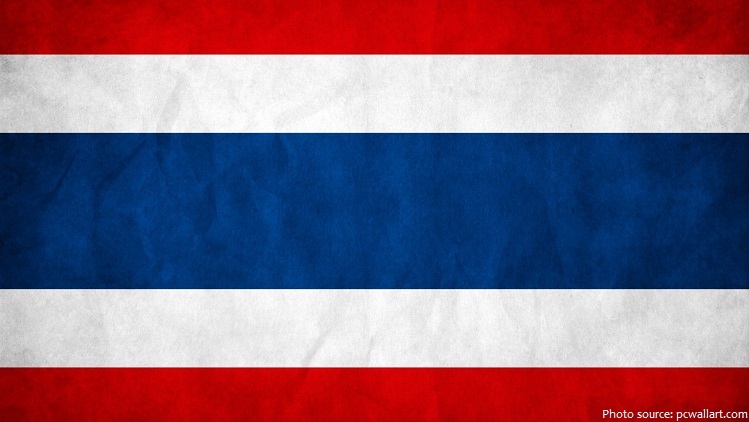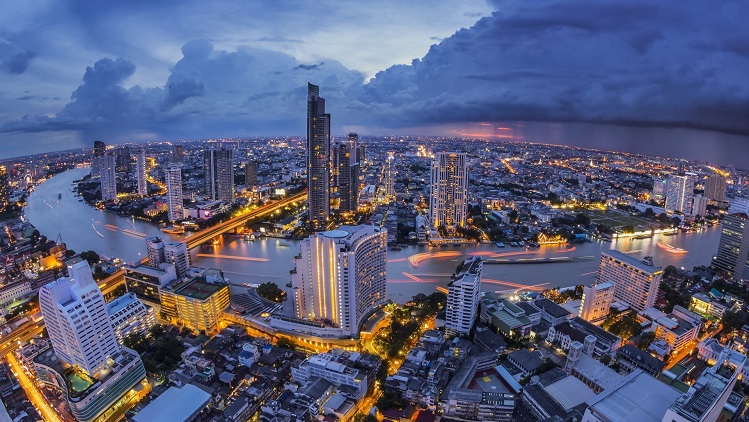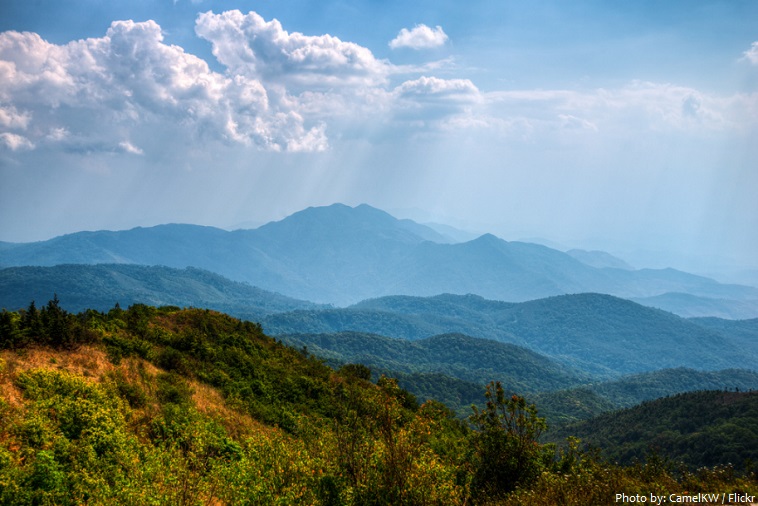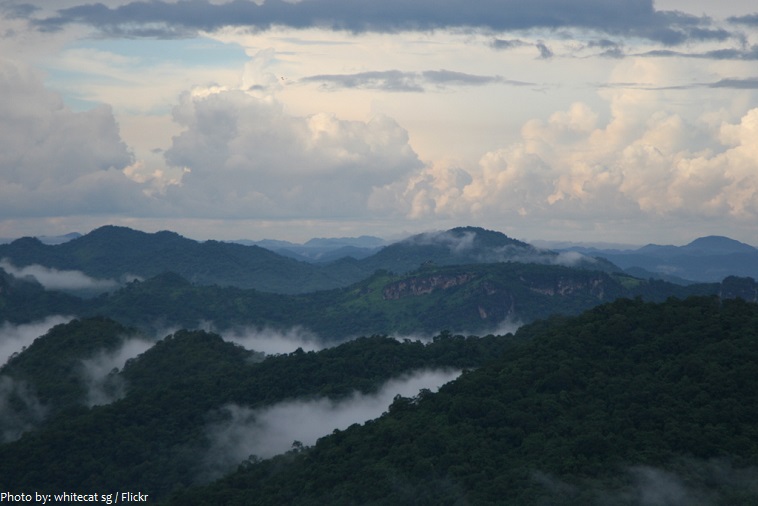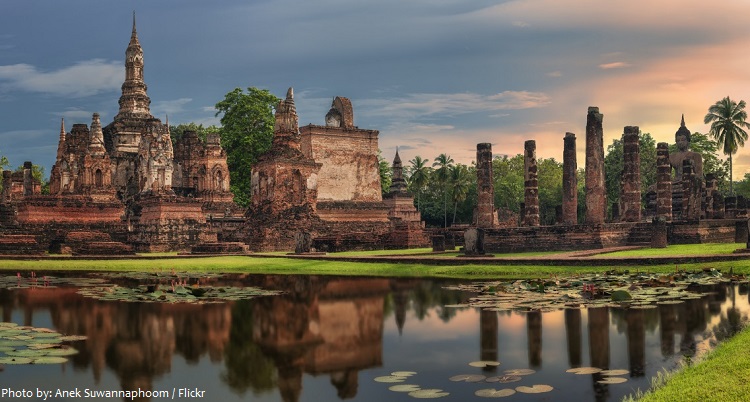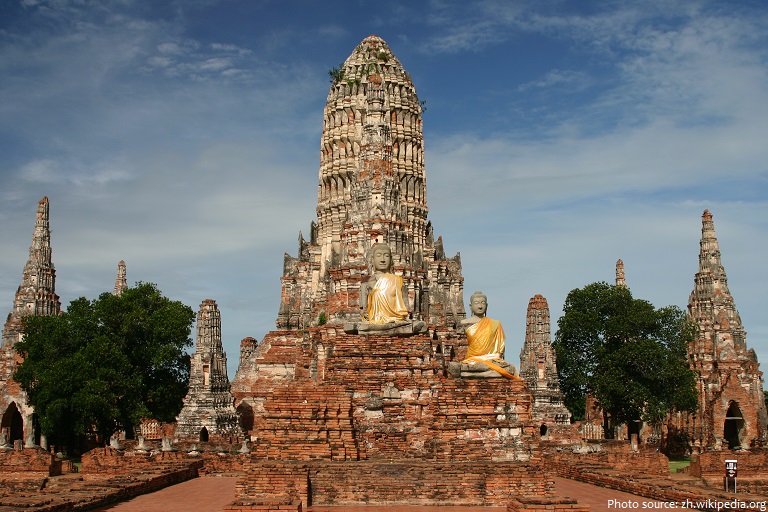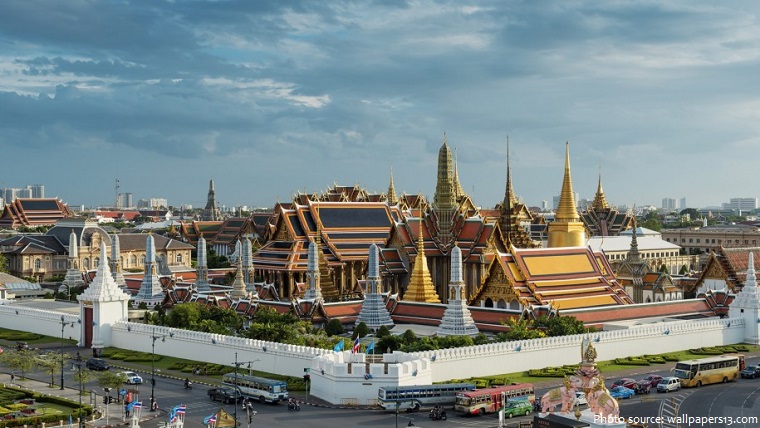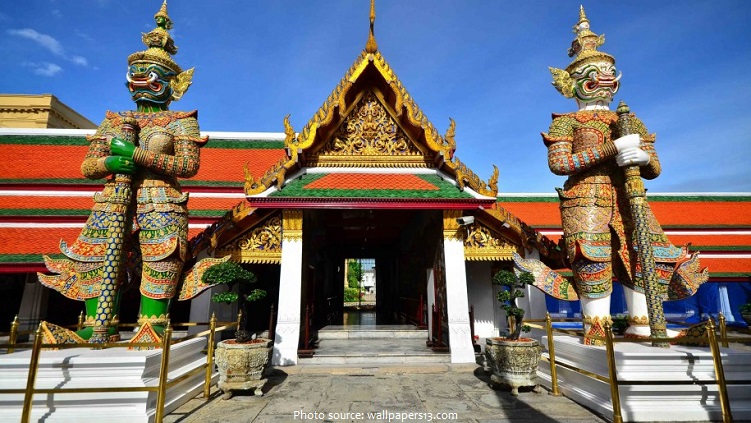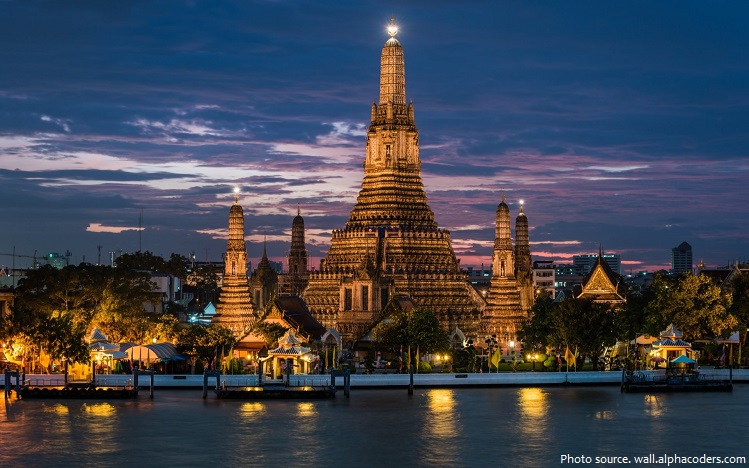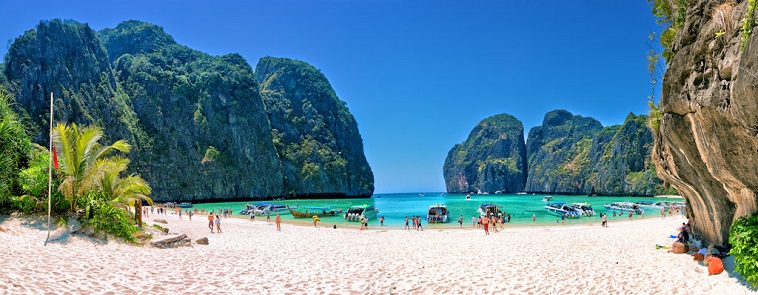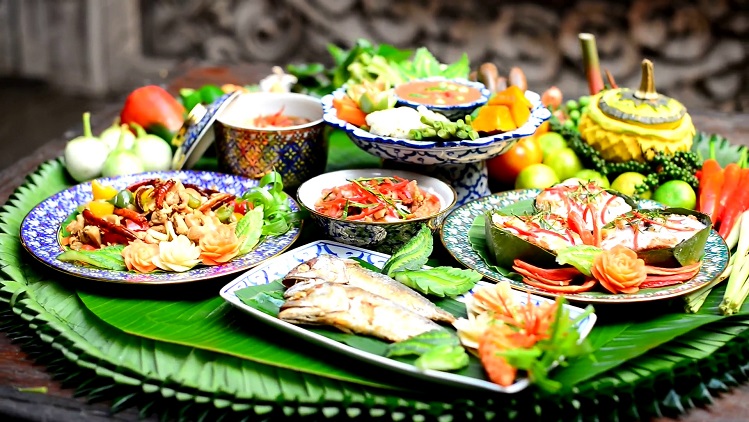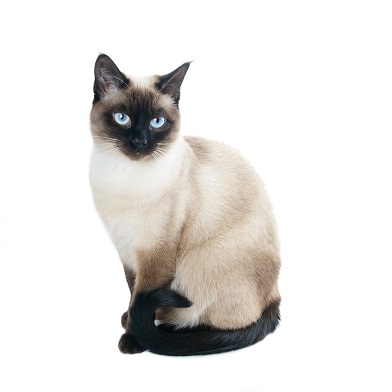Thailand is a country at the center of the Indochinese peninsula in Southeast Asia.
The official name of the country is the Kingdom of Thailand and was formerly known as Siam.
It is bordered to the north by Myanmar and Laos, to the east by Laos and Cambodia, to the south by the Gulf of Thailand and Malaysia, and to the west by the Andaman Sea and the southern extremity of Myanmar.
The official language is Thai.
As of 1 January 2017, the population of Thailand was estimated to be 68,355,167 people. Thailand is the 20th largest country in the world by population.
It is the 50th largest country in the world by area with 513,120 square kilometers (198,115 square miles).
Bangkok is the capital and most populous city of Thailand. It is one of Asia’s most cosmopolitan cities with magnificent temples and palaces, authentic canals, busy markets and a vibrant nightlife that has something for everyone.
The country has 4 definitive regions: the forested mountains of the west, the Khorat plateau of the northeast, the central plains of the interior region, and the beaches and islands on its coast.
Doi Inthanon is the highest point in Thailand with an elevation of 2,565 meters (8,415 feet) and is the focal point of the National Park which shares its name.
Thailand has 3,219 kilometers (2,000 miles) of coastline and over 1430 islands.
Thailand has some of the most beautiful beaches in the world. There are certain things that characterize Thai beaches – clear waters, white sand, and the iconic longtail boats that dot the shore.
Forest covers some 37% of the country’s area, while cultivation occupies about 40%.
Thailand’s protected areas included 147 national parks, 58 wildlife sanctuaries, 67 non-hunting areas, and 120 forest parks. They cover almost 20 percent of the kingdom’s territory.
Khao Yai National Park is the third largest and most popular national park of Thailand. The park was established in 1962 as Thailand’s first national park. It covers an area of 2,168 square kilometers (837 square miles). Khao Yai is part of Dong Phayayen-Khao Yai Forest Complex, a World Heritage Site declared by UNESCO, covering 5 protected areas from Khao Yai to Cambodian border.
Thailand has 5 UNESCO world heritage sites.
The Historic Town of Sukhothai and Associated Historic Towns is a UNESCO World Heritage site which consists of Sukhothai historical park, Kamphaeng Phet historical park and Si Satchanalai historical park. These historical parks preserve the remains of the three main cities of the Sukhothai Kingdom which had flourished during the 13th and 14th century CE. The Sukhothai Kingdom is viewed as having been the first of the Thai kingdoms.
Founded c. 1350, Ayutthaya became the second Siamese capital after Sukhothai. It was destroyed by the Burmese in the 18th century. Its remains, characterized by the prang (reliquary towers) and gigantic monasteries, give an idea of its past splendour. It was declared a UNESCO World Heritage Site in 1991.
The Grand Palace is a complex of buildings at the heart of Bangkok, Thailand. The palace has been the official residence of the Kings of Siam (and later Thailand) since 1782. The king, his court and his royal government were based on the grounds of the palace until 1925. The Grand Palace is currently partially open to the public as a museum, but it remains a working palace, with several royal offices still situated inside.
Wat Phra Kaew is regarded as the most sacred Buddhist temple (wat) in Thailand. It is located in within the precincts of the Grand Palace.The Emerald Buddha housed in the temple is a potent religio-political symbol and the palladium (protective image) of Thai society.
Wat Arun (“Temple of Dawn”) is a Buddhist temple (wat) in Bangkok Yai district of Bangkok, on the Thonburi west bank of the Chao Phraya River. The temple derives its name from the Hindu god Aruna, often personified as the radiations of the rising sun. Wat Arun is among the best known of Thailand’s landmarks and the first light of the morning reflects off the surface of the temple with pearly iridescence.
The Phi Phi Islands are one of Thailand’s most popular resort areas. Phi Phi is a group of six islands. Only Phi Phi Don is inhabited, with day trips available to the surrounding islands. Phi Phi Leh hosts stunningly beautiful bays and beaches, including the world-famous Maya Bay [photo below], which was the set where The Beach (with Leonardo Di Caprio) was filmed.
Thailand is home to the world’s 9th tallest statue, The Great Buddha of Thailand, at the Wat Muang Monastery in Ang Thong province. The statue stands 92 meters (300 feet) high, and is 63 meters (210 feet) wide.
Known as Siam until 1939, Thailand is the only Southeast Asian country never to have been taken over by a European power.
Thailand’s name in the Thai language is Prathet Thai, which means “Land of the Free.”
A revolution in 1932 led to a constitutional monarchy ending centuries of absolute monarchy.
The king is the leader of the country. The prime minister is picked from among members of the House of Representatives, but is appointed by the king.
The Thai economy enjoys fast-paced growth based on exports, but the country faces the challenge of spreading the wealth to poorer regions — the infertile eastern plateau is the poorest.
Agriculture and tourism are the most important industries in Thailand.
Thailand tourism officials say the country received a record 32.59 million foreign visitors in 2016.
Thai cuisine is one of the most popular cuisines in the world. Thai cooking places emphasis on lightly prepared dishes with strong aromatic components and a spicy edge.
Buddhism is the primary religion in Thailand, it is practised by about 95% of the population.
The Thai elephant is the official national animal of Thailand.
A century ago, more than 100,000 elephants lived in Thailand, with about 20,000 of them untamed. Now, there are about 5,000, with less than half of them wild.
The Garuda (a creature from the Hindu religion) is a national and royal symbol of Thailand.
Muay Thai or Thai Boxing is the national sport and cultural martial art of Thailand.
The longest place name in the world is the full name of Bangkok, the capital city of Thailand: Krungthepmahanakhon Amonrattanakosin Mahintharayutthaya Mahadilokphop Noppharatratchathaniburirom Udomratchaniwetmahasathan Amonphimanawatansathit Sakkathattiyawitsanukamprasit. Its direct translation means “City of Angels, Great City of Immortals, Magnificent City of the Nine Gems, Seat of the King, City of Royal Palaces, Home of Gods Incarnate, Erected by Visvakarman at Indra’s Behest.”
Thai brothers Chang and Eng Bunker inspired the term “Siemese twins” and were joined at the chest. They died in 1873.
Siamese cats originated in Thailand where they are called Wichian Mat. The Siamese became one of the most popular breeds in Europe and North America in the 20th century.
Kitti’s hog-nosed bat – thought to be the world’s smallest mammal – is found in Thailand. It weights just two grams.
Northern Thailand was a major producer of opium in the 1960s and 1970s, which was a major source of income for the hill tribes.
The northern tip of Thailand, the western tip of Laos, and the eastern corner of Myanmar make up what is called the “Golden Triangle” and is notorious for the production and trafficking of opium and heroin.
The town of Kanchanburi is home to the famous “Bridge Over the River Kwai”, part of the Burma-Siam railway.
More than 1,500 species of orchids grow wild in Thai forests. Thailand is the world’s number one orchid exporter.
According to the World Economic Forum, Thailand is the 13th friendliest country in the world.
